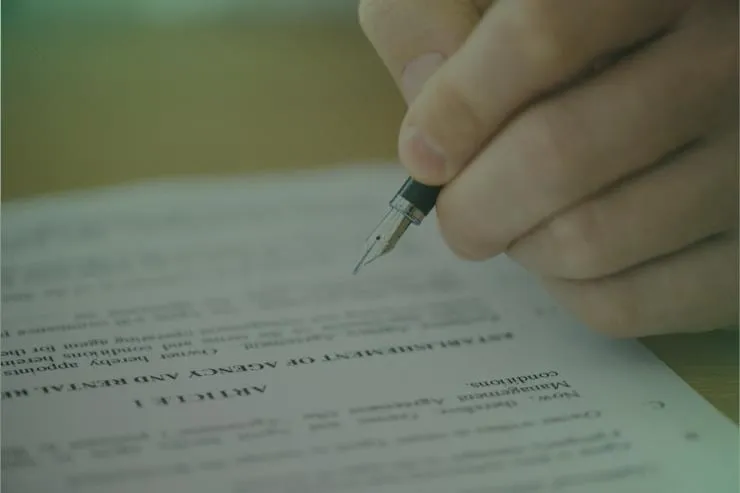The Difference Between Official Translation & Certified Document Translation Services
These translation types are often used interchangeably but have distinct meanings, especially in legal and official contexts. Here’s how they differentiate:
-
Standard Translation:

This is a general translation of a document from one language to another:
– The primary goal is to accurately convey the meaning of the source text in the target language.
It doesn’t typically include any formal certification or attestation of accuracy beyond the translator or agency providing the service.
-
Official Translation:
This term is often used broadly and can sometimes overlap with “certified” translation, depending on the country and the requesting authority,
-Official translation implies that the translation is recognized as valid for official purposes.
– Often performed by a professional translator or translation company with credentials or affiliations recognized by official bodies.
– Official translation includes a statement from the translator or agency attesting to the accuracy and completeness of the translation, sometimes with a stamp or seal.
-
Certified Document Translation:
This is a specific type of official translation that includes a signed statement (certification) from the translation agency attesting to the accuracy and completeness of the translated document,
– The certification typically includes the agency’s credentials, contact information, signature, and a stamp or seal. It also specifies the language pair and confirms that the translation is a true and accurate representation of the original document.
– In the United States, a certified translation is often required in courts, and academic institutions.
-
Notarized Translation Services:
– A notarized translation is a certified translation that has an additional step: the translator signs their statement of accuracy in the presence of a notary public,
– The notary public verifies the identity of the translator and affixes their official seal and signature to the certification.
– Notarization adds an extra layer of legal formality to the certified translation.
A Step-by-Step Guide to Obtaining Official Translation for Your Business
Securing official translations for your business doesn’t have to be daunting. This step-by-step guide streamlines the process, ensuring accuracy and legal validity for your global endeavors.
Step 1: Identify Your Needs:
Begin by clearly defining which documents require official translation and for what purpose. Is it for legal filings, regulatory compliance, intellectual property protection, or market entry? Understanding the specific requirements of the receiving authority (government agency, court, etc.) is crucial, as it dictates the level of certification needed (certified, notarized, sworn).
Step 2: Research Reputable Translation Providers:
Look for certified translation agencies or freelance translators with proven experience in your industry and the required language pairs. Check their credentials, client testimonials, and adherence to quality standards like ISO certifications. Ensure they offer the specific type of official translation you need (certified or notarized).
Step 3: Request a Detailed Quote:
Provide the translation provider with clear copies of your documents. A reputable agency will offer a transparent quote outlining the cost per word/page, certification fees, notarization costs (if applicable), and turnaround time. Discuss any specific formatting or terminology requirements.
Step 4: Confirm and Initiate the Translation:
Once you’ve chosen a provider and agreed on the terms, formally approve the project. Ensure a confidentiality agreement is in place, especially for sensitive business documents.
Step 5: Review and Verify the Translation:
Upon completion, carefully review the translated documents for accuracy and completeness. While official translations guarantee legal validity, your internal review can catch any industry-specific nuances.
Step 6: Obtain Certification and Notarization:
The translation provider will issue a signed certificate of accuracy. If notarization is needed, they will arrange for the translator to sign the certification in the presence of a notary public, who will then affix their seal and signature.
Step 7: Secure and Organize Your Official Translations:
Keep both the original documents and the official translations in a safe and easily accessible location. Depending on the context, you may need to provide both versions.
How to Choose the Right Official Translation Service Provider
Choosing the right official translation service provider is a pivotal for any business growing into global markets or dealing with international legal and administrative processes. The accuracy and validity of documents translation can impact the legal standing and business reputation. In these steps you will find how to navigate this official translation services provider selection process:
- Pinpoint Your Precise Requirements:
Before embarking on your search, define your specific needs. Including:
– The Nature of Your Documents: Different document types necessitate different linguistic expertise.
– The Target Languages: Clearly identify the language pairs involved. Ensure the provider has native speaking translators proficient in both the source and target languages, possessing a nuanced understanding of cultural context.
– Required Level of Certification: Do you need a certificate of accuracy from the translator or agency? Is notarization by a public notary required to verify the translator’s identity?
– Your Industry’s Specific Demands: If your business operates in a specialized sector like pharmaceuticals, finance, or engineering, ensure the translation provider has translators with relevant subject-matter expertise. A translator unfamiliar with industry-specific jargon can introduce critical errors.
Get to know more about our services and official translation and certified document translation services.









